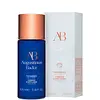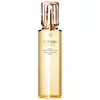What's inside
What's inside
 Key Ingredients
Key Ingredients

 Benefits
Benefits

 Concerns
Concerns

 Ingredients Side-by-side
Ingredients Side-by-side

Water
Skin ConditioningGlycerin
HumectantGluconolactone
Skin ConditioningLactobacillus/Wasabia Japonica Root Ferment Extract
AntioxidantPhytic Acid
Sodium Hydroxide
BufferingPotassium Sorbate
PreservativeXanthan Gum
EmulsifyingSodium Benzoate
MaskingSalicylic Acid
MaskingCaesalpinia Spinosa Gum
Skin ConditioningPaeonia Lactiflora Root Extract
Skin ConditioningPapain
Skin ConditioningCitric Acid
BufferingSodium Hyaluronate
HumectantHydrolyzed Rice Protein
Skin ConditioningMaltodextrin
Absorbent1,2-Hexanediol
Skin ConditioningCaprylyl Glycol
EmollientCarbomer
Emulsion StabilisingN-Hydroxysuccinimide
Skin ConditioningCamellia Sinensis Leaf Extract
AntimicrobialHydrogenated Lecithin
EmulsifyingTocopheryl Acetate
AntioxidantAlgin
MaskingAlanyl Glutamine
HumectantArginine
MaskingOligopeptide-177
Phenylalanine
MaskingSisymbrium Irio Seed Oil
MaskingSodium Chloride
MaskingWater, Glycerin, Gluconolactone, Lactobacillus/Wasabia Japonica Root Ferment Extract, Phytic Acid, Sodium Hydroxide, Potassium Sorbate, Xanthan Gum, Sodium Benzoate, Salicylic Acid, Caesalpinia Spinosa Gum, Paeonia Lactiflora Root Extract, Papain, Citric Acid, Sodium Hyaluronate, Hydrolyzed Rice Protein, Maltodextrin, 1,2-Hexanediol, Caprylyl Glycol, Carbomer, N-Hydroxysuccinimide, Camellia Sinensis Leaf Extract, Hydrogenated Lecithin, Tocopheryl Acetate, Algin, Alanyl Glutamine, Arginine, Oligopeptide-177, Phenylalanine, Sisymbrium Irio Seed Oil, Sodium Chloride
Water
Skin ConditioningButylene Glycol
HumectantDipropylene Glycol
HumectantGlycerin
HumectantPEG/PPG-14/7 Dimethyl Ether
Skin ConditioningPEG-8
HumectantTrehalose
HumectantPhenoxyethanol
PreservativeMethyl Gluceth-10
EmulsifyingPPG-13-Decyltetradeceth-24
EmulsifyingTheanine
EmollientMethylparaben
PreservativeDisodium EDTA
Erythritol
HumectantSodium Citrate
BufferingSodium Hyaluronate
HumectantDipotassium Glycyrrhizate
HumectantPolyquaternium-51
Skin ConditioningTremella Fuciformis Polysaccharide
Emulsion StabilisingCitric Acid
BufferingXylitol
HumectantSodium Acetylated Hyaluronate
HumectantParfum
MaskingAngelica Acutiloba Root Extract
Skin ConditioningPaeonia Albiflora Root Extract
Skin ConditioningSerine
MaskingGlycine
BufferingScutellaria Baicalensis Root Extract
AstringentRosmarinus Officinalis Leaf Water
MaskingHydrolyzed Silk
HumectantCI 15985
Cosmetic ColorantTocopherol
AntioxidantPerilla Ocymoides Leaf Extract
TonicCI 19140
Cosmetic ColorantBenzoic Acid
MaskingPrunus Speciosa Leaf Extract
Skin ConditioningFructose
HumectantIsodonis Japonicus Leaf/Stalk Extract
MaskingHydrolyzed Conchiolin Protein
Skin ConditioningPEG-30 Phytosterol
EmulsifyingHydrogenated Lecithin
EmulsifyingTrisodium EDTA
Water, Butylene Glycol, Dipropylene Glycol, Glycerin, PEG/PPG-14/7 Dimethyl Ether, PEG-8, Trehalose, Phenoxyethanol, Methyl Gluceth-10, PPG-13-Decyltetradeceth-24, Theanine, Methylparaben, Disodium EDTA, Erythritol, Sodium Citrate, Sodium Hyaluronate, Dipotassium Glycyrrhizate, Polyquaternium-51, Tremella Fuciformis Polysaccharide, Citric Acid, Xylitol, Sodium Acetylated Hyaluronate, Parfum, Angelica Acutiloba Root Extract, Paeonia Albiflora Root Extract, Serine, Glycine, Scutellaria Baicalensis Root Extract, Rosmarinus Officinalis Leaf Water, Hydrolyzed Silk, CI 15985, Tocopherol, Perilla Ocymoides Leaf Extract, CI 19140, Benzoic Acid, Prunus Speciosa Leaf Extract, Fructose, Isodonis Japonicus Leaf/Stalk Extract, Hydrolyzed Conchiolin Protein, PEG-30 Phytosterol, Hydrogenated Lecithin, Trisodium EDTA
 Reviews
Reviews

Alternatives
Ingredients Explained
These ingredients are found in both products.
Ingredients higher up in an ingredient list are typically present in a larger amount.
Citric Acid is an alpha hydroxy acid (AHA) naturally found in citrus fruits like oranges, lemons, and limes.
Like other AHAs, citric acid can exfoliate skin by breaking down the bonds that hold dead skin cells together. This helps reveal smoother and brighter skin underneath.
However, this exfoliating effect only happens at high concentrations (20%) which can be hard to find in cosmetic products.
Due to this, citric acid is usually included in small amounts as a pH adjuster. This helps keep products slightly more acidic and compatible with skin's natural pH.
In skincare formulas, citric acid can:
While it can provide some skin benefits, research shows lactic acid and glycolic acid are generally more effective and less irritating exfoliants.
Most citric acid used in skincare today is made by fermenting sugars (usually from molasses). This synthetic version is identical to the natural citrus form but easier to stabilize and use in formulations.
Read more about some other popular AHA's here:
Learn more about Citric AcidGlycerin is already naturally found in your skin. It helps moisturize and protect your skin.
A study from 2016 found glycerin to be more effective as a humectant than AHAs and hyaluronic acid.
As a humectant, it helps the skin stay hydrated by pulling moisture to your skin. The low molecular weight of glycerin allows it to pull moisture into the deeper layers of your skin.
Hydrated skin improves your skin barrier; Your skin barrier helps protect against irritants and bacteria.
Glycerin has also been found to have antimicrobial and antiviral properties. Due to these properties, glycerin is often used in wound and burn treatments.
In cosmetics, glycerin is usually derived from plants such as soybean or palm. However, it can also be sourced from animals, such as tallow or animal fat.
This ingredient is organic, colorless, odorless, and non-toxic.
Glycerin is the name for this ingredient in American English. British English uses Glycerol/Glycerine.
Learn more about GlycerinHydrogenated Lecithin is created from the hydrogenation of lecithin (a group of phospholipids). Hydrogenation is a chemical reaction between hydrogen and another element.
This ingredient is an emollient and emulsifier. As an emollient, it helps soften skin by trapping moisture within. As an emulsifier, it prevents oil and water ingredients from separating.
Sodium Hyaluronate is hyaluronic acid's salt form. It is commonly derived from the sodium salt of hyaluronic acid.
Like hyaluronic acid, it is great at holding water and acts as a humectant. This makes it a great skin hydrating ingredient.
Sodium Hyaluronate is naturally occurring in our bodies and is mostly found in eye fluid and joints.
These are some other common types of Hyaluronic Acid:
Learn more about Sodium HyaluronateWater. It's the most common cosmetic ingredient of all. You'll usually see it at the top of ingredient lists, meaning that it makes up the largest part of the product.
So why is it so popular? Water most often acts as a solvent - this means that it helps dissolve other ingredients into the formulation.
You'll also recognize water as that liquid we all need to stay alive. If you see this, drink a glass of water. Stay hydrated!
Learn more about Water